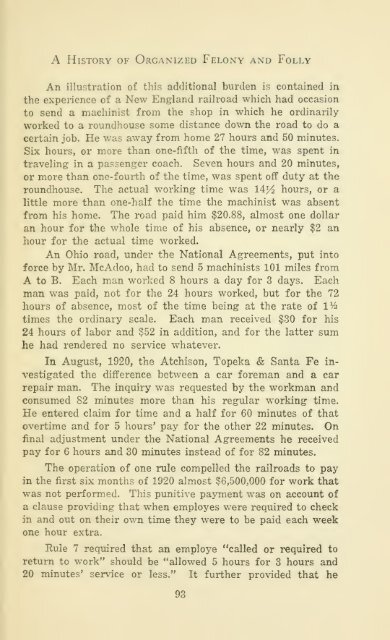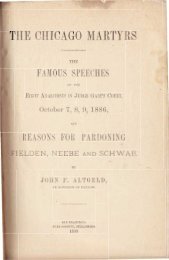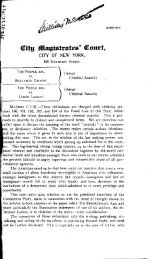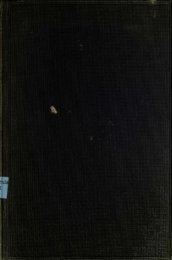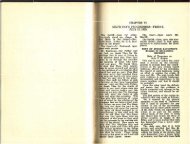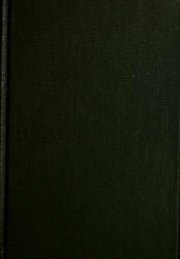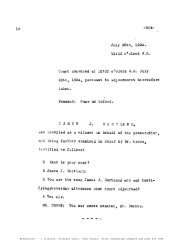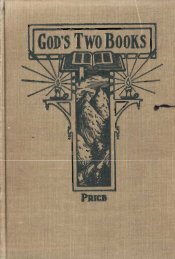A History of Organized Felony and Folly - The Clarence Darrow ...
A History of Organized Felony and Folly - The Clarence Darrow ...
A History of Organized Felony and Folly - The Clarence Darrow ...
Create successful ePaper yourself
Turn your PDF publications into a flip-book with our unique Google optimized e-Paper software.
A <strong>History</strong> <strong>of</strong> <strong>Organized</strong> <strong>Felony</strong> <strong>and</strong> <strong>Folly</strong><br />
An illustration <strong>of</strong> this additional burden is contained in<br />
the experience <strong>of</strong> a New Engl<strong>and</strong> railroad which had occasion<br />
to send a machinist from the shop in which he ordinarilyworked<br />
to a roundhouse some distance down the road to do a<br />
certain job. He was away from home 27 hours <strong>and</strong> 50 minutes.<br />
Six hours, or more than one-fifth <strong>of</strong> the time, was spent in<br />
traveling in a passenger coach. Seven hours <strong>and</strong> 20 minutes,<br />
or more than one-fourth <strong>of</strong> the time, was spent <strong>of</strong>f duty at the<br />
roundhouse. <strong>The</strong> actual working time was 14^ hours, or a<br />
little more than one-half the time the machinist was absent<br />
from his home. <strong>The</strong> road paid him $20.88, almost one dollar<br />
an hour for the whole time <strong>of</strong> his absence, or nearly $2 an<br />
hour for the actual time worked.<br />
An Ohio road, under the National Agreements, put into<br />
force by Mr. McAdoo, had to send 5 machinists 101 miles from<br />
A to B. Each man worked 8 hours a day for 3 days. Each<br />
man was paid, not for the 24 hours worked, but for the 72<br />
hours <strong>of</strong> absence, most <strong>of</strong> the time being at the rate <strong>of</strong> IV2<br />
times the ordinary scale. Each man received $30 for his<br />
24 hours <strong>of</strong> labor <strong>and</strong> $52 in addition, <strong>and</strong> for the latter sum<br />
he had rendered no service whatever.<br />
In August, 1920, the Atchison, Topeka & Santa Fe in-<br />
vestigated the difference betw-een a car foreman <strong>and</strong> a car<br />
repair man. <strong>The</strong> inquiry was requested by the workman <strong>and</strong><br />
consumed 82 minutes more than his regular working time.<br />
He entered claim for time <strong>and</strong> a half for 60 minutes <strong>of</strong> that<br />
overtime <strong>and</strong> for 5 hours' pay for the other 22 minutes. On<br />
final adjustment under the National Agreements he received<br />
pay for 6 hours <strong>and</strong> 30 minutes instead <strong>of</strong> for 82 minutes.<br />
<strong>The</strong> operation <strong>of</strong> one rule compelled the railroads to pay<br />
in the first six months <strong>of</strong> 1920 almost $6,500,000 for work that<br />
was not performed. This punitive payment was on account <strong>of</strong><br />
a clause providing that when employes were required to check<br />
in <strong>and</strong> out on their own time they were to be paid each week<br />
one hour extra.<br />
Rule 7 required that an employe "called or required to<br />
return to work" should be "allowed 5 hours for 3 hours <strong>and</strong><br />
20 minutes' service or less." It further provided that he<br />
93


